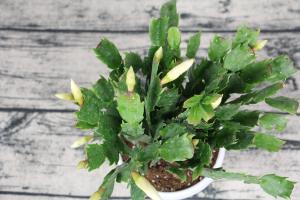Can You Plant Tomatoes and Green Beans Together?
As an aspiring gardener, it's essential to plan your garden space effectively, choosing the right plants to go alongside each other. The goal is to achieve maximum yield while keeping the plants healthy and happy. So, can you plant tomatoes and green beans together? The answer is, yes, you can! In fact, planting these two together can be beneficial in various ways.
The Companion Planting Benefits of Tomatoes and Green Beans
One of the most significant benefits of planting tomatoes and green beans together is their companion planting effects. Green beans and tomatoes are considered excellent companion plants. When you combine these two plants, they work together in various ways to boost each other's growth.
First, green beans are known for their nitrogen fixation capabilities. These plants have root nodules that harbor bacteria that convert atmospheric nitrogen into a form that plants can use. When planted close to tomato plants, which are heavy feeders, the green beans deposit nitrogen in the soil that the tomatoes can readily use for growth and fruit production.
Additionally, green beans act as living mulches to suppress weeds, retain soil moisture, and reduce soil erosion when planted around tomato plants. In return, tomato plants provide shade that is beneficial for the green beans, especially during hot summer months, preventing their soil from drying out quickly.
Considerations for Planting Tomatoes and Green Beans Together
Before planting tomatoes and green beans together, there are some considerations to keep in mind to optimize your yields.
In terms of soil requirements, both the tomato and the green bean plants do well in well-draining soil. However, the two plants have different pH requirements. Tomatoes prefer a slightly acidic soil with a pH of between 6.0 and 6.8, while green beans thrive in a slightly alkaline soil with a pH of 6.5 to 7.0. Therefore, it's essential to test your soil pH and amend it accordingly before planting your crops.
Another consideration is spacing. Both tomatoes and green beans require sufficient space for optimal growth. For instance, tomato plants should be spaced at least 2 feet apart, while green beans should be spaced at least 4 inches apart. When planting the two crops close together, you need to ensure that there is enough space for each plant to grow and develop without competing for nutrients and light.
Conclusion
Planting tomatoes and green beans together is an excellent way to achieve maximum yields while improving soil health. The companion planting benefits of these two crops help each other grow and thrive, creating a healthy ecosystem in your garden. However, before planting, you should consider soil pH, spacing, and other conditions to optimize your yields. With proper care and management, you can enjoy a bountiful harvest of these nutritious and delicious crops!

 how many times do yo...
how many times do yo... how many planted tre...
how many planted tre... how many pine trees ...
how many pine trees ... how many pecan trees...
how many pecan trees... how many plants comp...
how many plants comp... how many plants can ...
how many plants can ... how many plants and ...
how many plants and ... how many pepper plan...
how many pepper plan...































